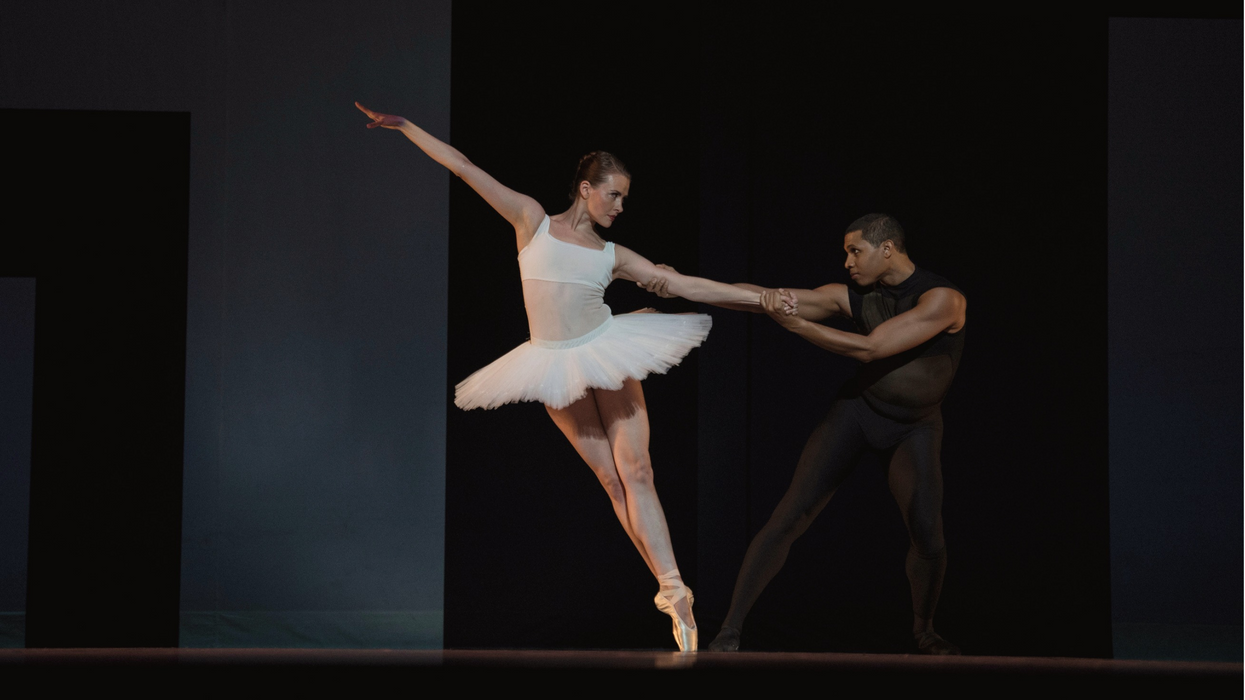The “Uncheat-able” Turns: How to Master Pirouettes From Fifth
While pirouettes from fifth position are not the flashiest turns in the ballet toolbox (we see you, fouettés), they are still one of the most technical. Turning from a tighter base—fifth position as opposed to fourth—makes it challenging to access and maintain momentum in the step, especially when the coordination is off. But when all the synapses are firing and the turns are done correctly, “it feels like floating,” says Ashley Thursby, a company artist with Louisville Ballet whose colleagues marvel at her seemingly effortless double pirouettes from fifth.
To find that same free and easy feeling in your turns, remember these tips.
Lock In Your Position
“Pirouettes from fifth are hard because you can’t really cheat,” says Laura Byram, an adjunct professor of dance at Butler University and the department’s ballet pedagogy instructor. Because the step has a very direct path from the prep to the position, you need to be precise about where you’re going before you take off.
“Make sure that your toes hit retiré and your fingertips—whether you’re turning with port de bra in first or fifth—quickly reach the peak of the position,” says Thursby. “It’s important to keep your shoulders over your hips to keep your ribs from flaring, as well.”
Byram cautions dancers to keep the retiré position from getting sloppy in the turns. By engaging the hamstring under the working leg, the knee stays lifted and the hips stay level. She also warns dancers to watch out for sickled feet in passé. “It’s a mistake I see even in professionals,” she says.
Put Your Back Into It
Many dancers struggle to access and activate the muscles in the back, yet the sides of the back and the obliques are key to getting fully around in the tight spiral of a pirouette from fifth. In order to fire up those muscles, Thursby recommends engaging the arm in second position. “Whichever side I’m turning away from, I think of that arm in second position reaching toward something. That really connects me to my back.”

Thursby performing the Lilac Fairy variation in Alun Jones’ “Sleeping Beauty”
Photo by Sam English, Courtesy of Louisville Ballet
Go Down to Go Up
A physical awareness of the deepest point in your plié and the most lifted feeling at the height of the turn are also needed for successful pirouettes from fifth. In the prep for the turn, “you feel as if you’re a wind-up toy and you get to that very last click of your deepest plié before you let it go,” says Thursby.
The feeling at the depth of the plié is like a rubber band that’s being pulled tight. The moment of pushing off is like releasing the rubber band, causing you to fly upward into a vertical spiral. “It’s a bit abstract, but I like to think of a column of energy that’s happening above the pirouette,” says Thursby. “There’s a continuous feeling of ascension and spiral upwards.”
In order to achieve that vertical lift and spiral, be sure to push off from both feet evenly. It’s a common mistake to pull the weight off the front foot preemptively, or to let that foot escape from fifth position. Keep the weight centered between both feet through the deepest point in the plié and into the push-off.
When All Else Fails, Balance!
No matter what level you’re at or how naturally turning comes to you, we all have good turning days and bad turning days. On those bad days when the turns aren’t coming, “go back to basics, set up retiré at the barre, and balance, balance, balance,” says Byram. “Without that balance, nothing is going to happen.”
After establishing the balance at the barre, she recommends breaking the turn down into quarters and then halves, and sustaining the balance at the finish of each partial rotation. “I often like to hold dancers’ hands and get them in a retiré position,” adds Byram. “I have them use their turnout muscles and their backs to pull the knee back and feel what it’s like to make the turn happen with just their balance.”
Once you achieve that strong, lifted balance, be careful not to anticipate the floor at the end of the turn. Particularly in continuous pirouettes from fifth, this can cause the foot to flex on the way down into fifth. “I never think about landing, because that always kills it for me,” says Thursby. “I only come down when gravity makes me.”




